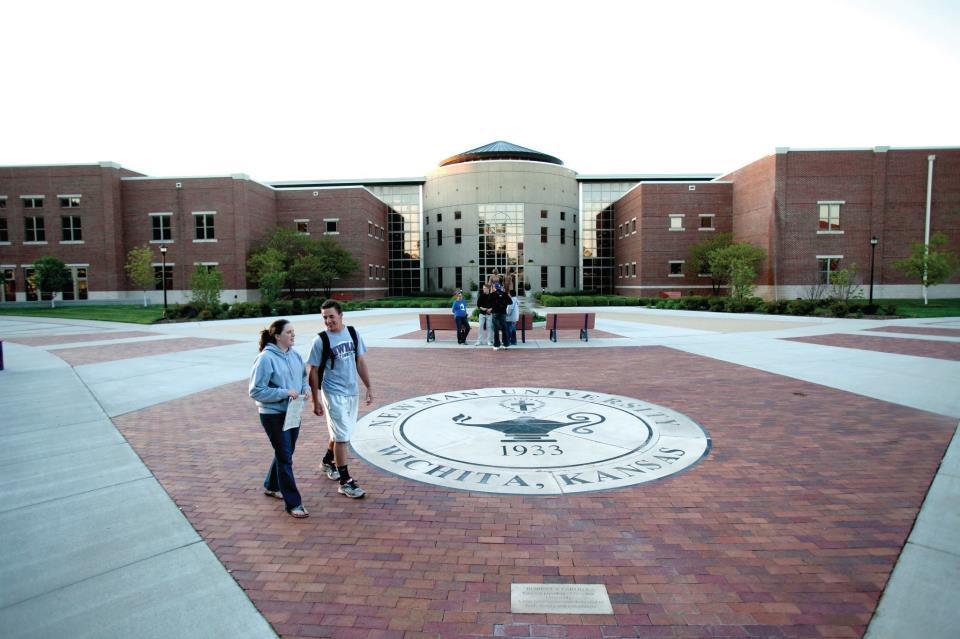By Courtney Klaus, Editor-In-Chief
Top administrators say students do not have reason for concern about Newman’s financial state, despite the university having to make some cost-cutting decisions this year.
President Noreen Carrocci said the university is overall financially healthy, but that it struggled to balance its budget because there were shortfalls in enrollment last year.
The university is reducing its costs to balance the budget at the end of this fiscal year by not giving raises for faculty this year and by temporarily suspending contributions to retirement starting in January. In addition, many of the departments in the university have reduced their expenses.
Vice President of Finance and Administration Jennifer Gantz said Newman faculty are not paid as much as other faculty at comparable schools, and that faculty raises are usually something the university does annually.
“And we really need to, especially when comparably we aren’t paying as much as we should. You want to retain your people,” Gantz said.
Gantz said the university is looking at ways to make sure that revenue covers expenses in the future. To do that, she said, the university has to either decrease costs or bring in more revenue. The decision regarding faculty was a short-term remedy, but Gantz said the university is looking at long-term plans for growth.
“This year we’re really looking at investing in areas that are going to bring us additional revenue, which is what we need to be doing,” Gantz said.
Carrocci said the university has recently invested more into science, nursing and allied health and has started new academic programs, including business and strategic intelligence, data analytics and social work.
Carrocci also said the university has also experienced recent financial success with the debt-free funding of the Bishop Gerber Science Center.
“We don’t have a big load of debt. The new Gerber Science Center and the renovations for nursing and allied health are paid for,” she said. “It’s the first time we’ve done a campaign without ever having to engage in some long-term loans.”
Gantz said the university has not taken on additional debt since 2013, and that the university’s overall level of debt is relatively low for its size.
Gantz said the university currently makes a $1.2 million principal payment annually to pay off two bonds that are due in 2026 and 2027.
Another thing the university is keeping a close eye on, Gantz said, is the student discount rate because the university needs to make sure it has enough revenue coming in.
“The discount rate last year was very high, higher than it should’ve been,” she said.
For next year, there will be a four percent reduction in athletic scholarships for incoming freshmen, a decision which drew a large number of student athletes to the Town Hall meeting on Nov. 27.
“It’s not just athletics that’s been targeted. It’s been across the board,” Gantz said. “You need to have enough income to cover all of your outflow, and right now we don’t.”
Gantz said the financial rewards for students, both athletic and non-athletic, are different from what they had been in the past, and the tuition discounts are re-evaluated every year.
A few years ago, Gantz said, there would be as many as 20 to 30 new recipients annually of the Cardinal Newman Scholarship, the university’s full-tuition academic scholarship reward. A couple of years ago, that number was reduced to five.
Carrocci said the four percent reduction should be thought of not as a decrease, but rather as a “course correction,” because, although the amount is less than last year, “it’s not a reduction compared to where we have been.” She said the scholarships will remain at generous amounts.
Gantz said the university’s hope is that the investments it has made in new academic programs and opportunities will help the university grow and eventually bring in more money for departments like athletics in the long term.
“You can’t cut your way to success...So you need to find ways you can invest, and ultimately we need to grow our non-athlete population so then we would be more similar to the schools we are competing against on the court or on the field,” Gantz said
Carrocci said the university is always planning for the future, particularly right now, as administrators and others put together the new three-year strategic plan.
“Financially overall, we’re solid,” Carrocci said. “Again, this is a challenging year, and I regret that it is, but I think we’ve made some investments in some programs that are going to pay off, and I think the future looks pretty bright.”
PHOTO: Courtesy photo, kmuw.org
